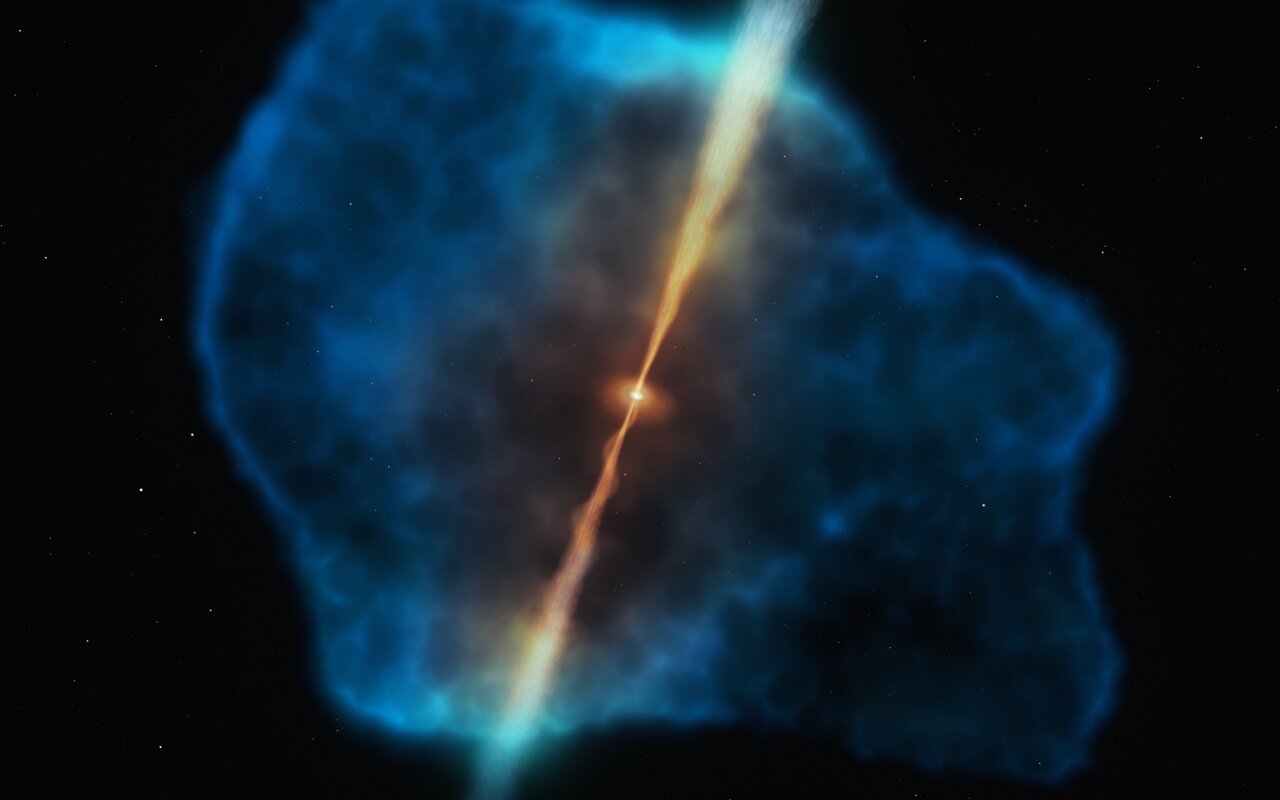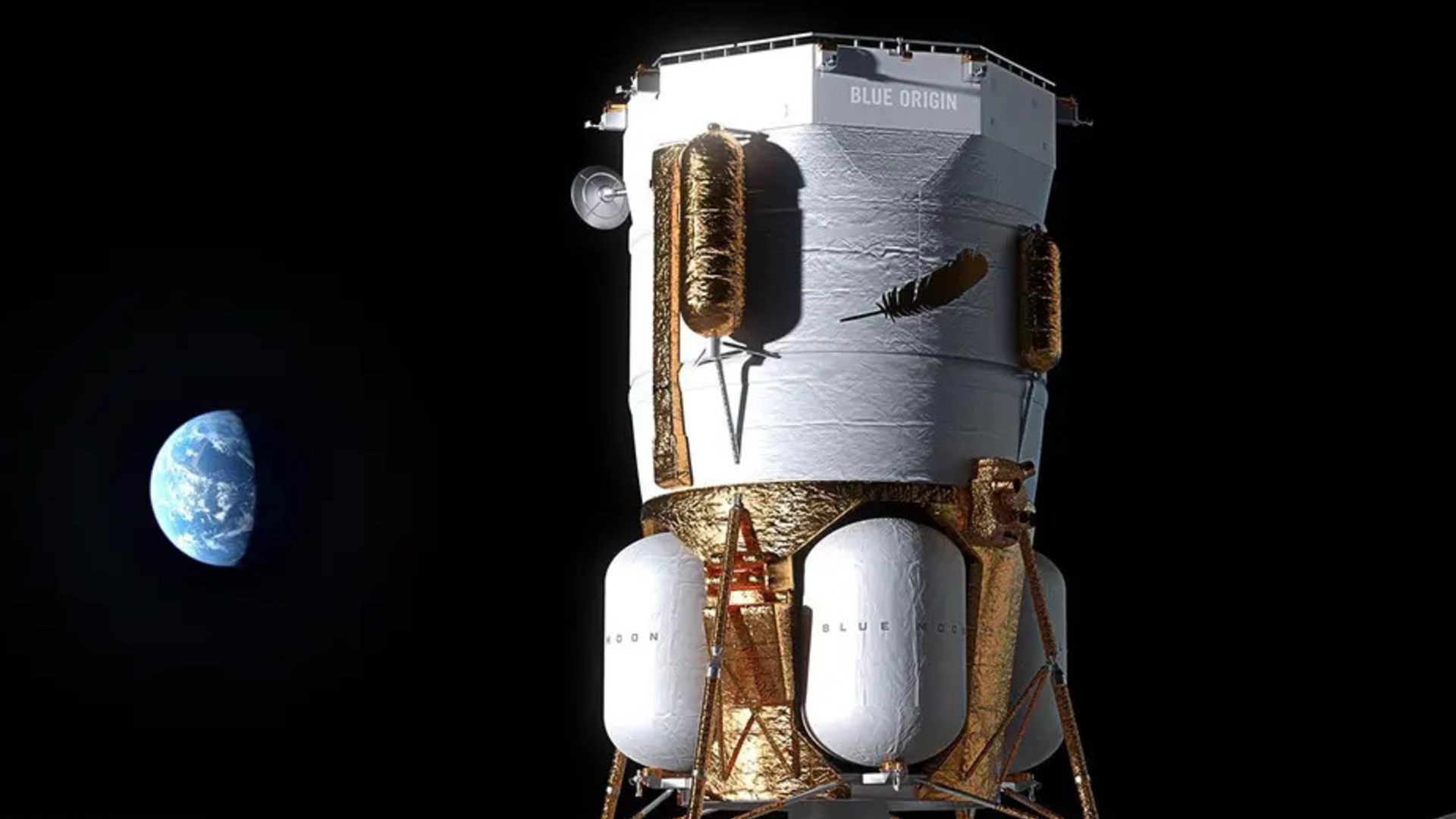Giant Gas 'Halos' Fed Hungry Black Holes at the Dawn of the Universe
At the cosmic dawn, black holes grew big and strong by gobbling up gas for breakfast.
Gas halos surround some of the earliest galaxies in the universe, providing a reservoir of cool gas that fuels the growth of supermassive black holes.
Using the European Southern Observatory's (ESO) Very Large Telescope (VLT), astronomers observed these gas halos around galaxies that formed more than 12.5 billion years ago. The cool gas contained in these halos would be the perfect food for supermassive black holes, which are believed to lie at the center of most galaxies.
"We are now able to demonstrate, for the first time, that primordial galaxies do have enough food in their environments to sustain both the growth of supermassive black holes and vigorous star formation," Emanuele Paolo Farina, lead author of the study from the Max Planck Institute for Astronomy in Heidelberg, Germany, said in a statement. "This adds a fundamental piece to the puzzle that astronomers are building to picture how cosmic structures formed more than 12 billion years ago."
Video: Early Universe Black Hole ‘Meals’ Observed by Very Large Telescope
Related: The Strangest Black Holes in the Universe
Black holes feed on dust and gas from their surrounding galaxies, allowing them to grow in size. Therefore, observing the halos of cool gas around these distant galaxies may help explain how supermassive black holes were able to grow so large, so quickly in the early universe, according to the statement.
"The presence of these early monsters, with masses several billion times the mass of our sun, is a big mystery," Farina said, adding that astronomers have not previously found a reservoir of gas and dust large enough to support the rapid growth of primordial black holes.
Using the Multi Unit Spectroscopic Explorer (MUSE) instrument on ESO's VLT, the astronomers studied 31 quasars — extremely bright objects powered by an active supermassive black hole in their centers — that formed 12.5 billion years ago, during the early years of the universe.
Breaking space news, the latest updates on rocket launches, skywatching events and more!
Twelve of those quasars were surrounded by reservoirs of cool, dense hydrogen gas stretching about 100,000 light-years from their central black holes. These gas halos, which are billions of times the mass of the sun, are believed to be tightly bound to their galaxies, making them "the perfect food source to sustain both the growth of supermassive black holes and vigorous star formation," ESO said in the statement.
"In a matter of a few hours per target, we were able to delve into the surroundings of the most massive and voracious black holes present in the young universe," Farina said in the statement.
Their findings were published Dec. 19 in The Astrophysical Journal.
- The Largest Black Holes in the Universe Formed in a Snap — Then Stopped
- Where Do Black Holes Lead?
- The Strangest Black Holes in the Universe
Follow Samantha Mathewson @Sam_Ashley13. Follow us on Twitter @Spacedotcom and on Facebook.


Samantha Mathewson joined Space.com as an intern in the summer of 2016. She received a B.A. in Journalism and Environmental Science at the University of New Haven, in Connecticut. Previously, her work has been published in Nature World News. When not writing or reading about science, Samantha enjoys traveling to new places and taking photos! You can follow her on Twitter @Sam_Ashley13.

